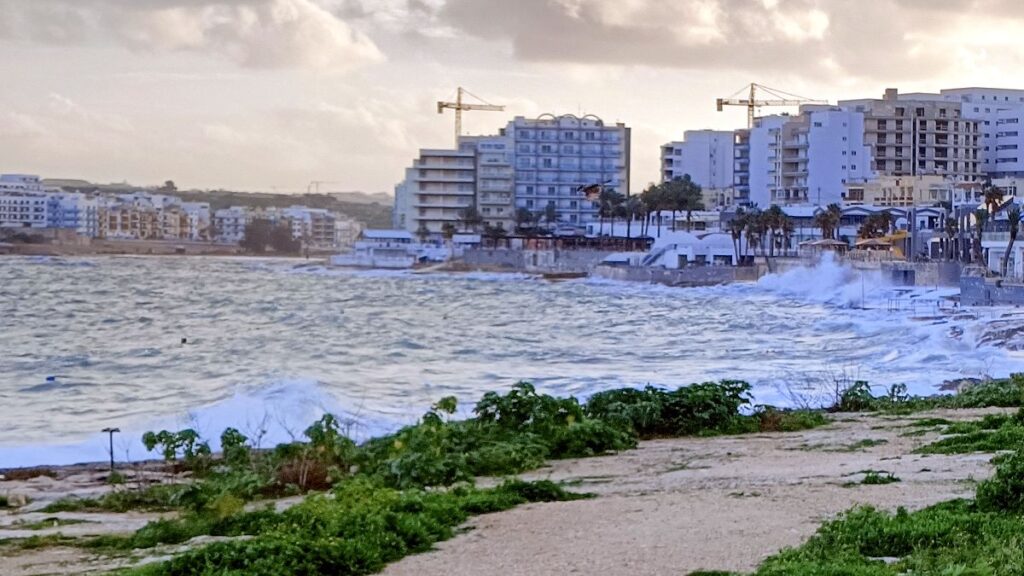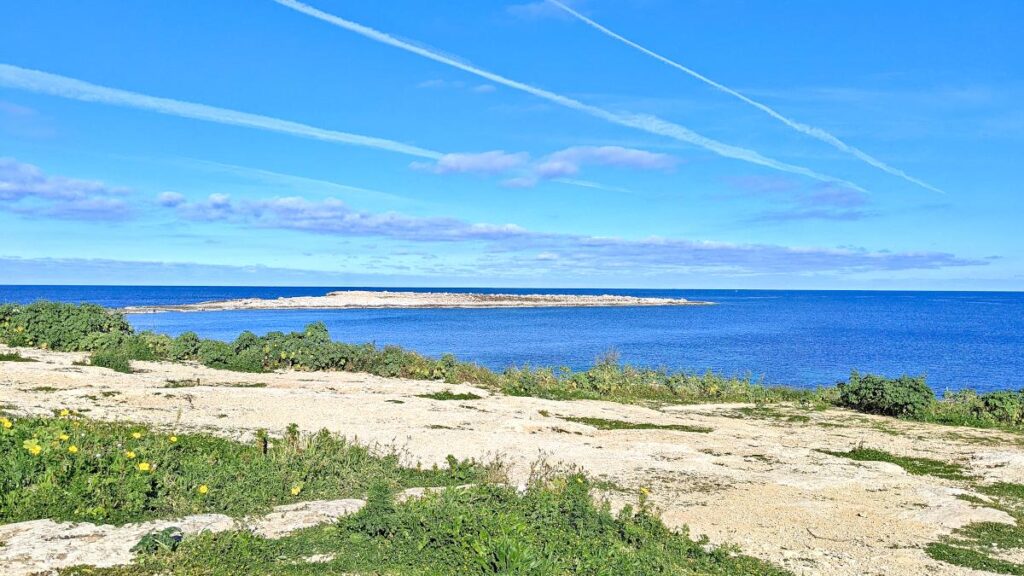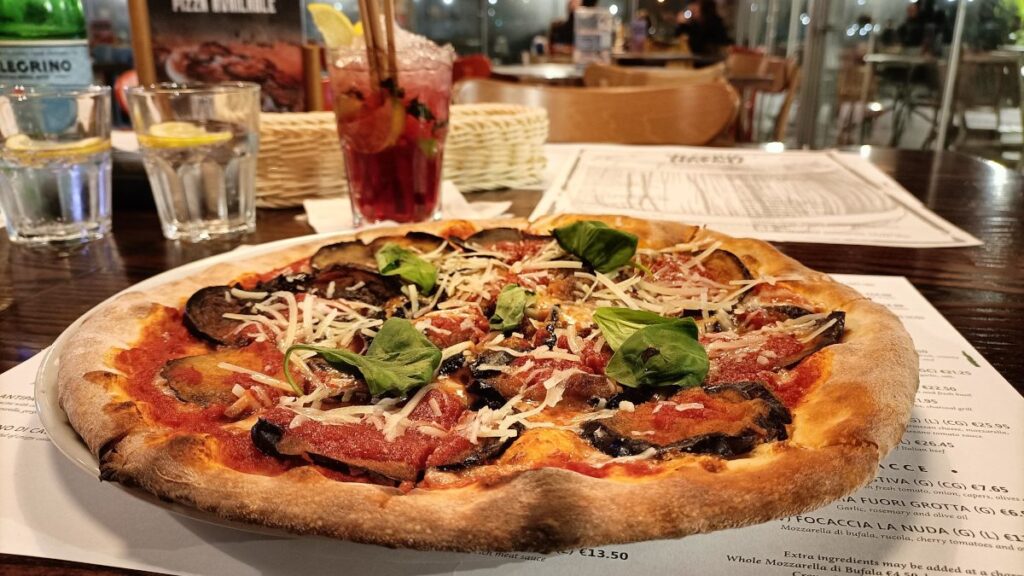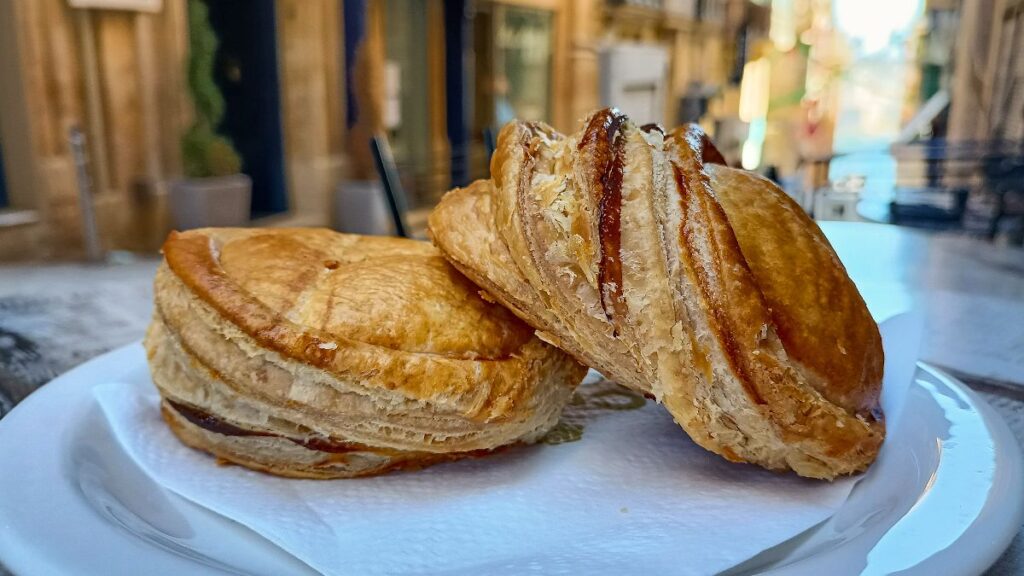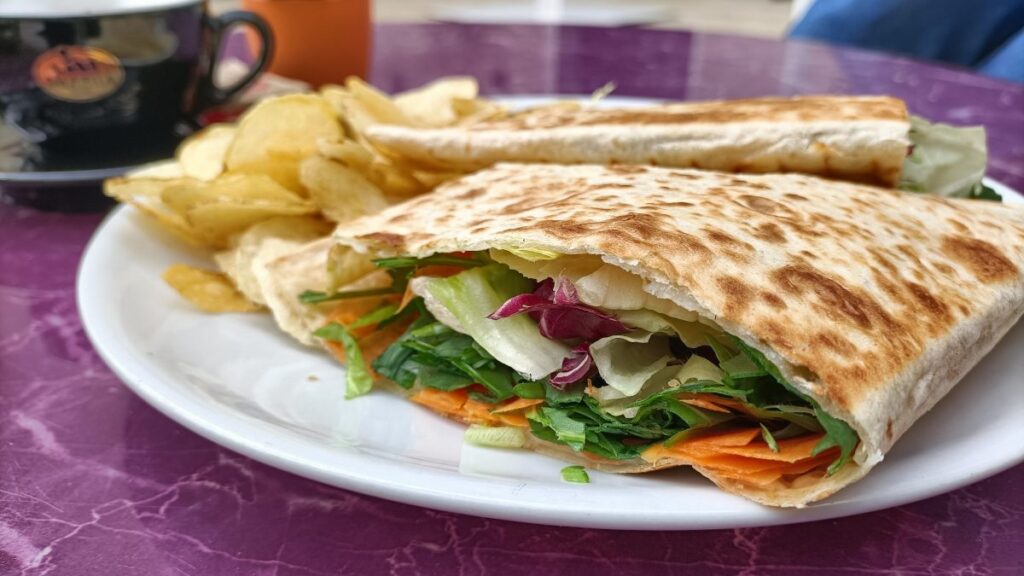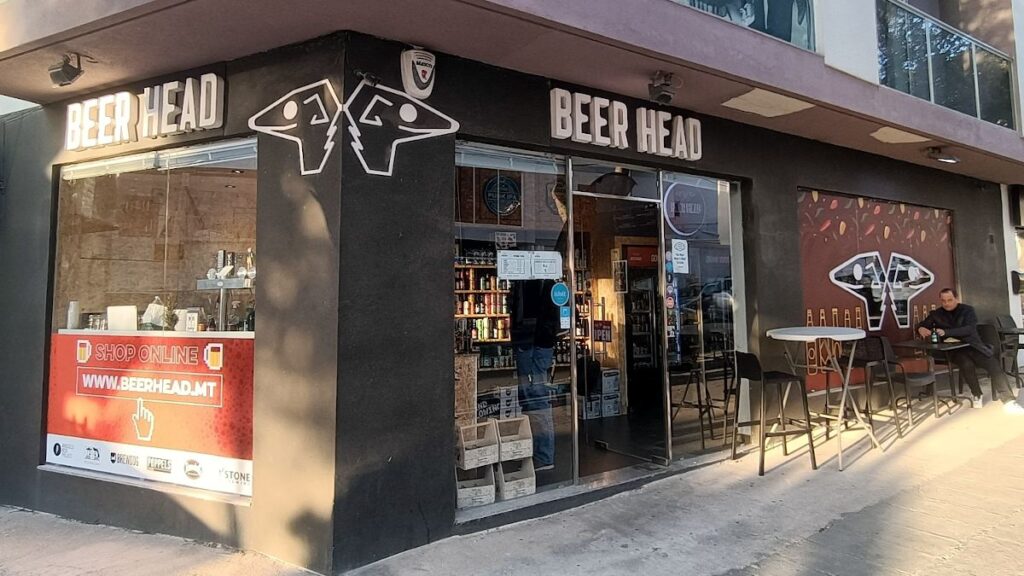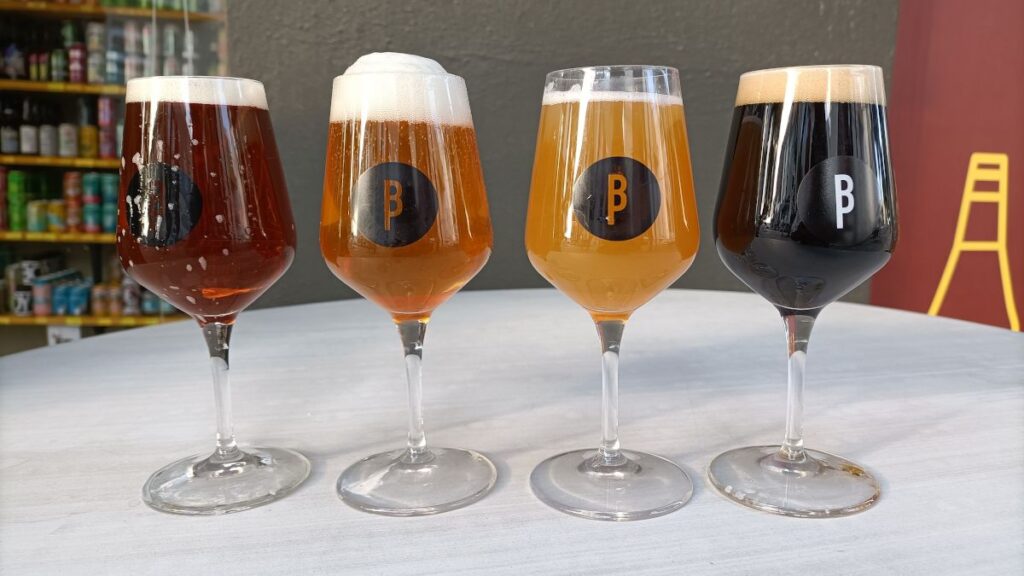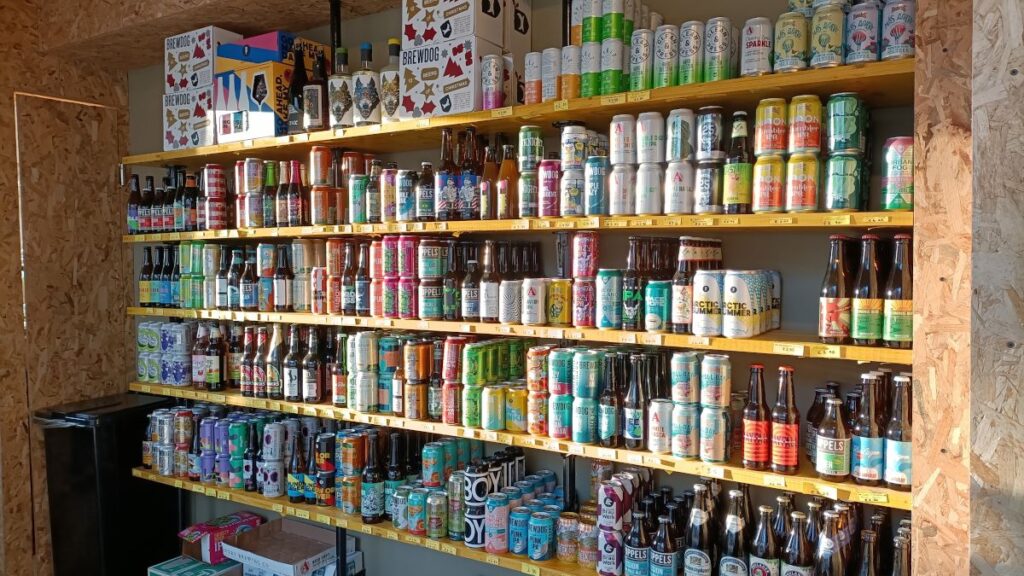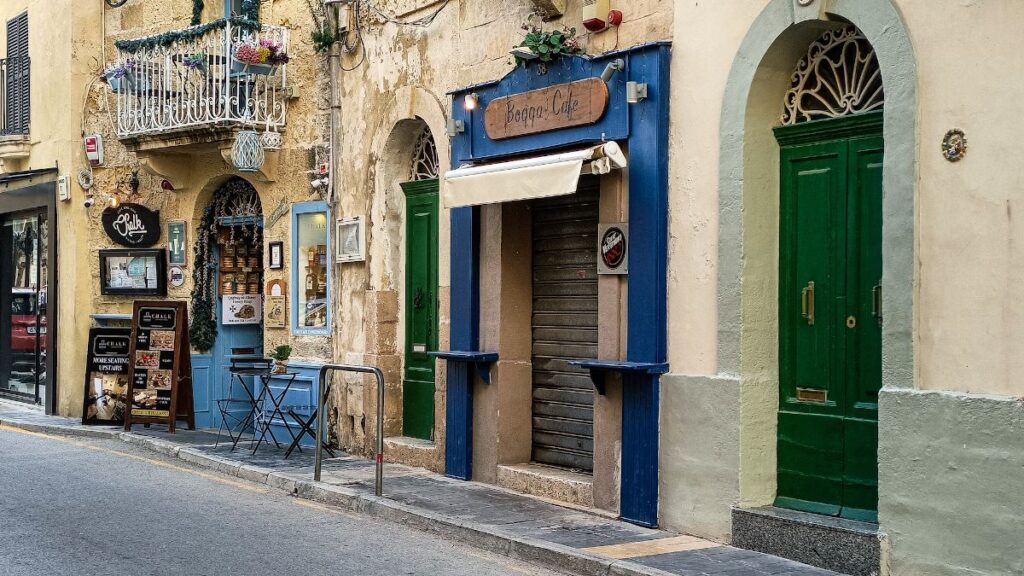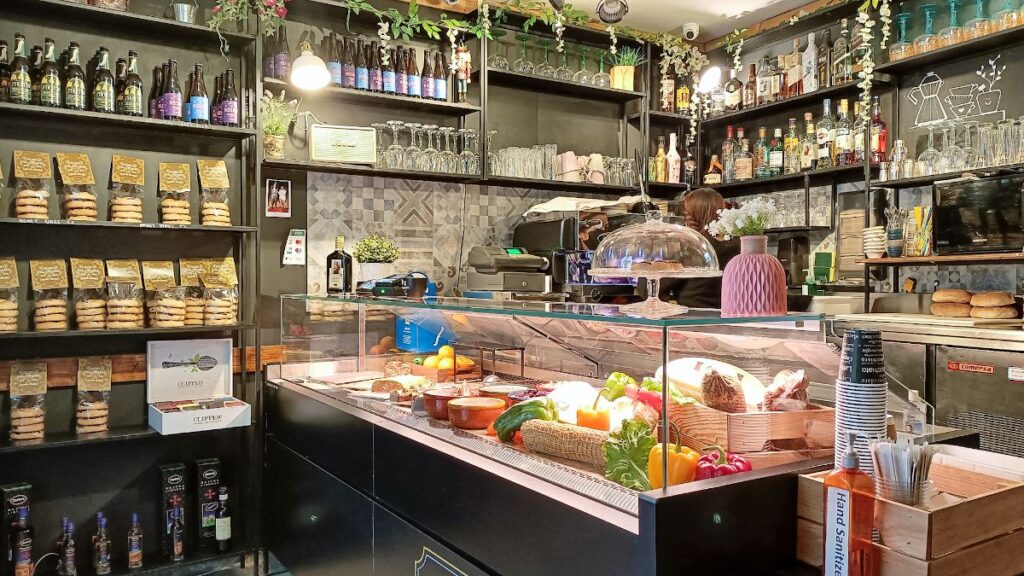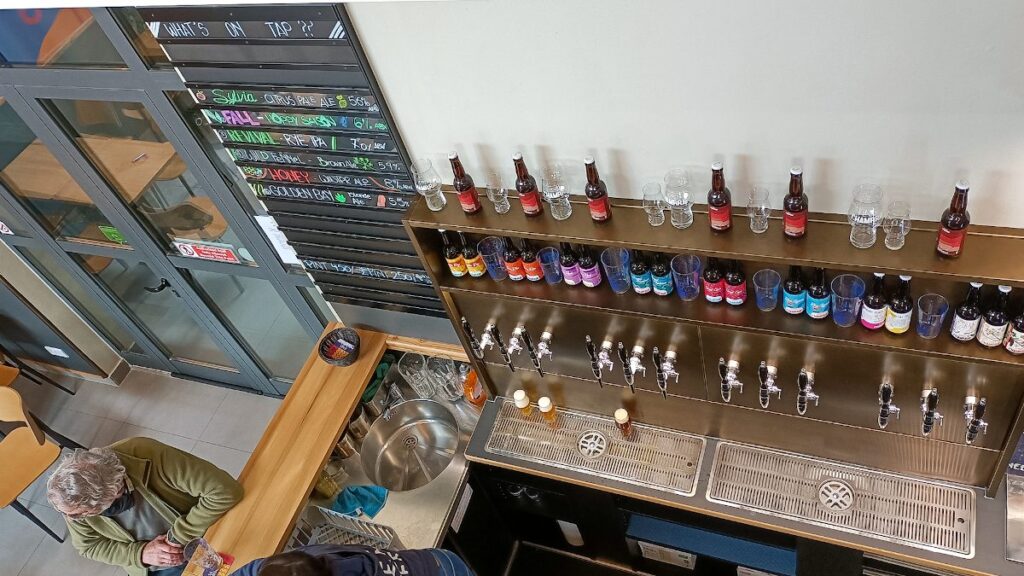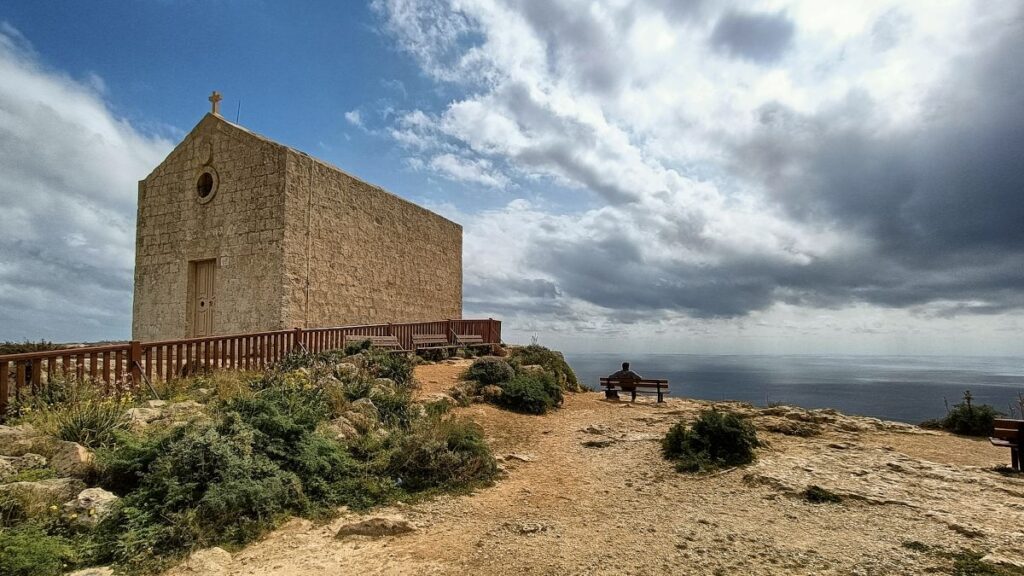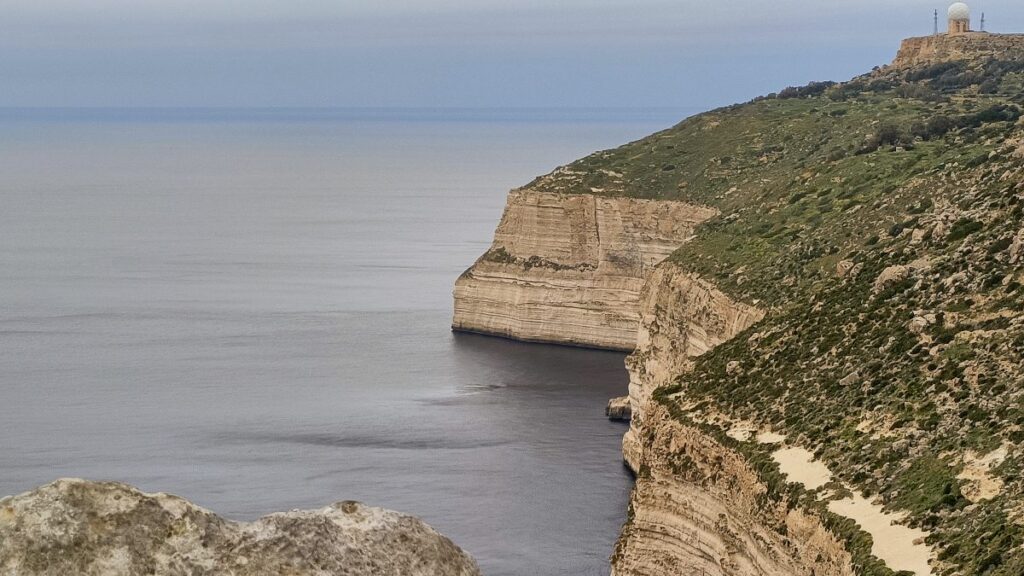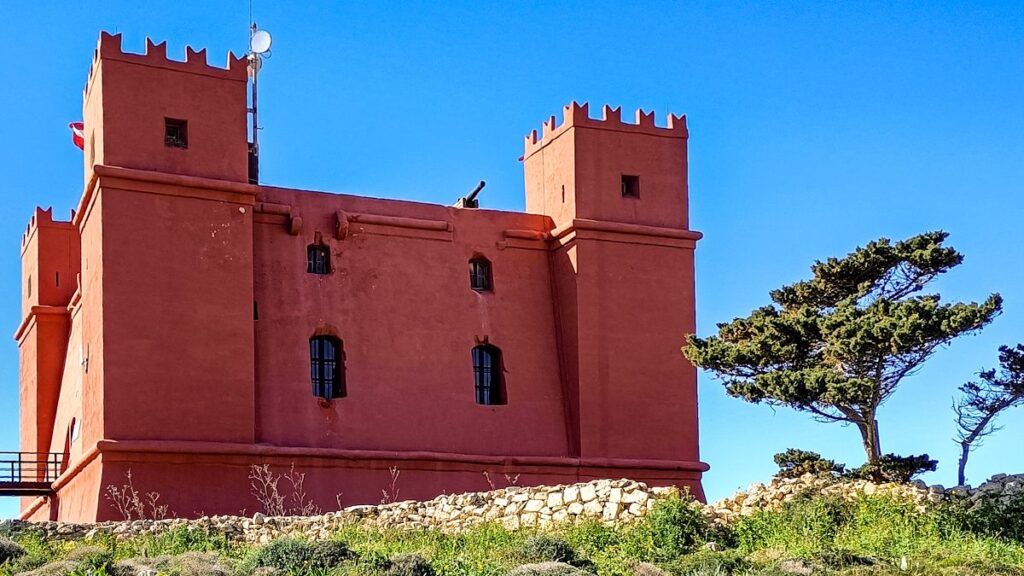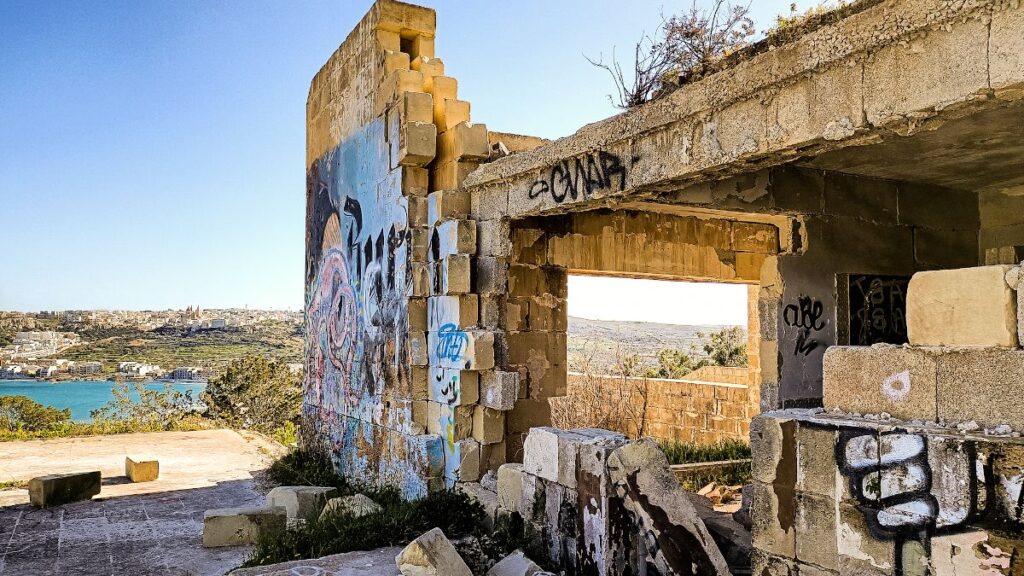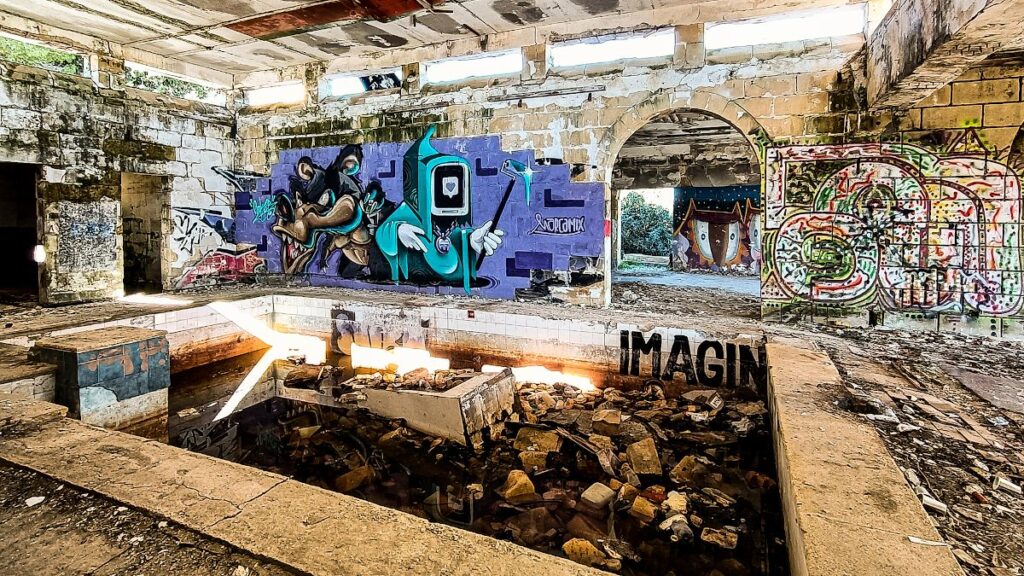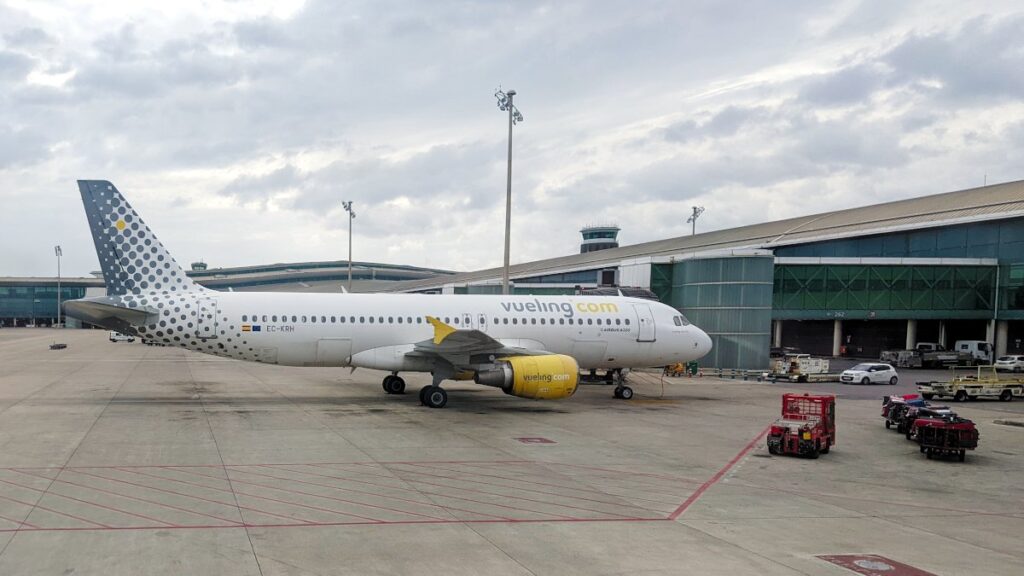Malta is one of the few countries in the world that have introduced a special visa for Digital Nomads. But what is it like to spend a long time on that tiny Mediterranean island? How to get started and how to prepare? Keep reading to find out all details of being a Digital Nomad in Malta. It is a great place to work remotely. Check it out.
For me, the reason to move to Malta was an easy one. I needed some peace and quiet to get lots of work done and I wanted nice weather so any time off could be spent having fun outside: hiking, tasting craft beer or just enjoying good coffee & local food in a sunny environment. Malta was the obvious choice, especially because it was winter in Europe.
Where to create your Digital Nomad base? Which area?
When checking out Malta on the map you will notice that you will need to zoom in a few times to be able to see the island. And you thought neighbouring Sicily was small. Malta is literally a tiny island in the Mediterranean Sea.
That is what makes it so perfect for travellers in general and Digital Nomads specific. It really doesn’t matter which area of Malta you will stay in as it doesn’t take much time to get around.
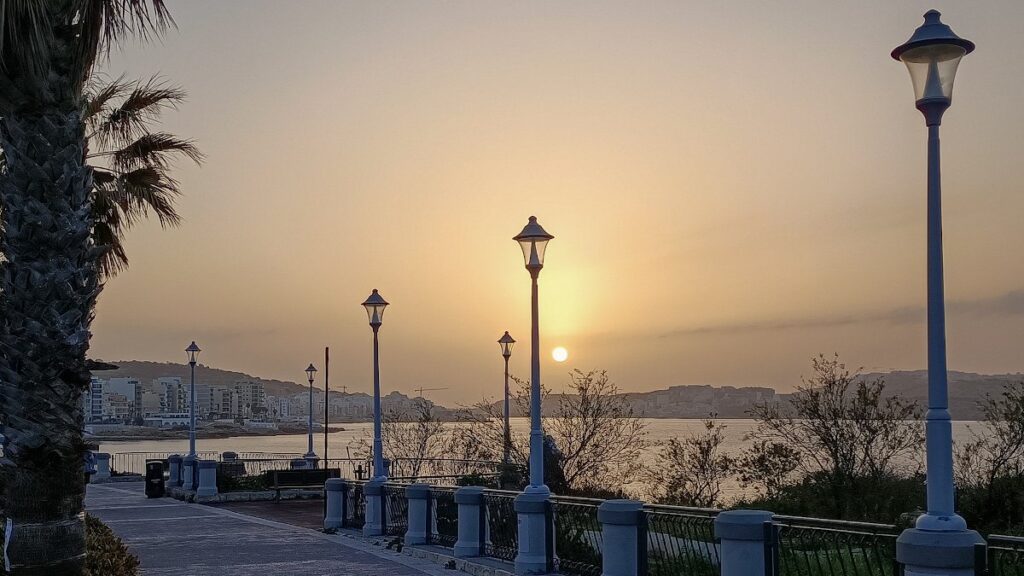
For me, I selected St Paul’s Bay (San Pawl il-Baħar) as my geek base. I wasn’t locked into long-term accommodation so it was easy to start in one place and see how it would go. As I really liked this part of Malta it became my “permanent” base on Malta.
What is the best time of the year to go to Malta?
For me, January up until March was great. It was the best European winter ever. Nice and sunny and it felt more like spring. We only had a few days of bad weather, it was just perfect. Of course, the summer months are the busiest time of the year in Malta, when everyone in Europe wants to enjoy their summer holiday in a sunny place, for example, Malta.
How to apply for the Malta Digital Nomad Visa
The biggest advantage for freelancers, remote working geeks and digital nomads from all over the world is the fact that Malta is one of the few countries that offers a special Digital Nomad visa.
And these are the criteria to get the Malta Nomad Residency Permit.
- You must prove you work remotely via the internet or any form of modern communication.
- You must be a third-country national
- You must either:
- have a contract with and work for a company that is registered in a foreign country
- or be a partner or shareholder of and work for a company that is registered in a foreign country.
- or you must work as a freelancer/contractor or consultant for clients that are based in a foreign country. You must have contracts with them to prove it.
- Your gross monthly income must be at least €2,700
- You must have a valid travel document (passport)
- You must have travel insurance that covers medical costs while staying and working in Malta. This insurance policy is especially for Digital Nomads, it covers medical expenses, COVID-19, your gear and much more. And the best part is that you pay per 4 weeks so it is super affordable, you don’t have to pay it all in one go. It gives you the flexibility the need, especially when travelling a lot or when your plans change.
- You must have your accommodation sorted, so you must have either a rental or a purchase agreement. You can book accommodation for a minimum of 4 weeks and show that as proof. That will do.
- You must be of good character and pass a background check.
Check out the official info about this Digital Nomad visa for Malta or Nomad Residency Permit as they call it and make it happen.
Unless you have a European passport, then you can just go to Malta and stay there as long as you like. Gotta love the free movement of people & labour in the European Union.
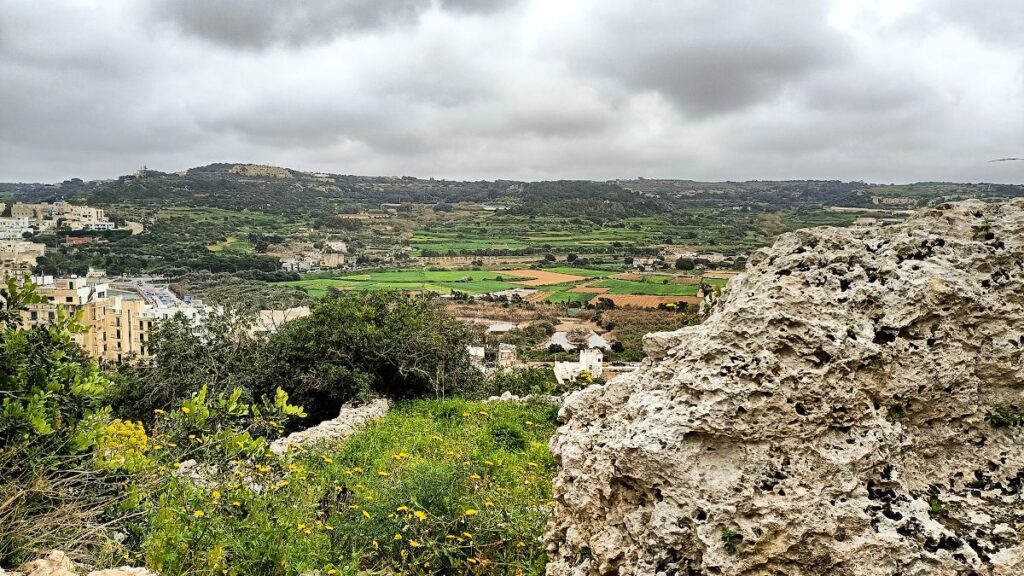
Finding accommodation in Malta
As mentioned before, the location where you base yourself in Malta doesn’t matter that much. It’s a small island and getting around is easy.
It all depends on your wishes and how flexible you want to be when it comes to accommodation. If you like to plan it all in advance and want to have accommodation sorted for the whole year, you might want to contact a specialised property agent like these.
If you prefer to be more flexible and rent accommodation on a more short-term or flexible basis, you can go for holiday apartments or hotels. These can be really cheap especially when arriving in the low season when not many tourists are around. This is the perfect option for more flexible travellers to get you started. It is an easy way to get to know the lay of the land without locking yourself into a long-term rental agreement.
All the things that matter to a geek: wifi and 4G/5G
When you travel halfway across the world to base yourself as Digital Nomad in Malta, you want to make sure that you have everything you need. Well, everything to get your work done and to have some fun on your hours or days off.
The most important item of this is probably the quality of the internet or wifi. Something you should always check when renting a property. Check the reviews of each property in Booking or AirBnB and filter reviews on wifi. And when travelling with your own travel router, you will always be able to create your own secure “home network” when away from home (runs your favourite VPN or Wireguard VPN). GL.iNet's Slate is still my favourite travel router. By the way, using a VPN is a must-have when working remotely but most digital nomads probably already know that. Don't leave home without it.
I have no complaints at all. The wifi was perfect, cell phone reception is excellent all over the island and there are lots of free wifi spaces in public areas. Although I didn’t use the latter as I had plenty of 4G data in my mobile SIM-only plan.
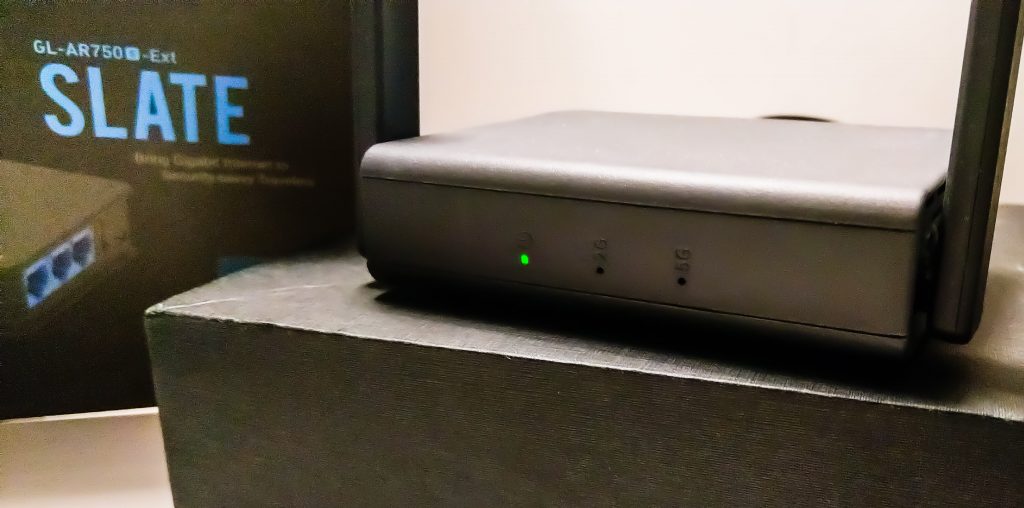
Getting paid & spending money as a digital nomad in Malta
Make sure you have a bank card/bank account that is tailored for digital nomads and travellers. You probably have a great business bank account and personal account in your home country but you don’t want to waste money on converting your home currency to Euros.
Get a free multi-currency account and debit card with Wise, which works perfectly in Malta and the rest of Europe. Wise Multi-Currency has the best coverage when it comes to local bank accounts worldwide and the currencies it supports. You can get a European, Australian, New Zealand or any other bank account instantly. They support over 50 currencies so you can convert almost any currency in the world to Euros (when going to Europe) without the high costs that banks or credit card companies charge.
The Wise multi-currency card is accepted in almost every shop in Malta. The only time it wasn’t accepted was because the shop didn’t have electronic payment equipment.
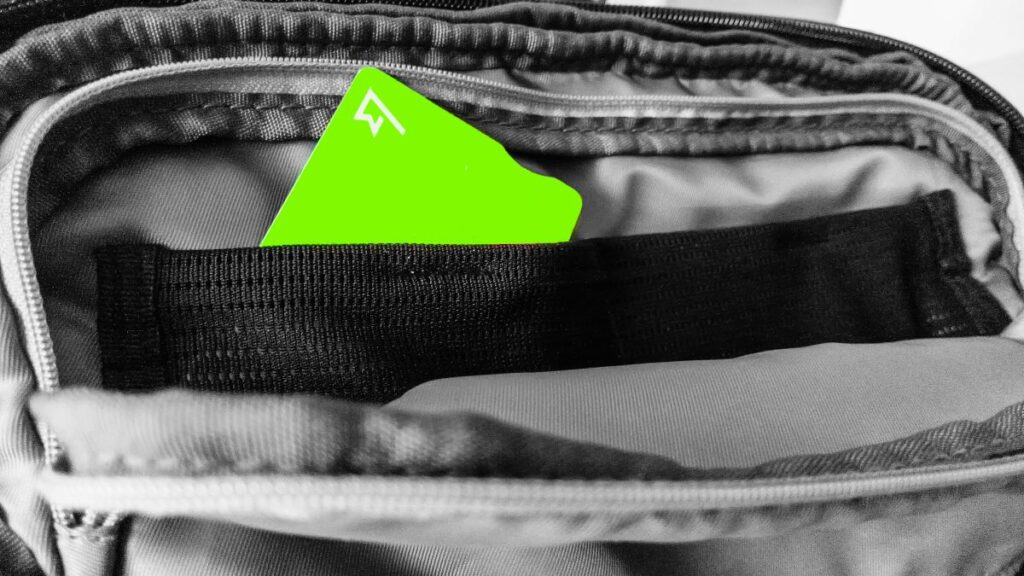
Cost of living in Malta: food, drinks and groceries
Here’s an overview of what I paid during my stay in Malta. Just the price of ordinary day-to-day things. The things that matter to travelling geeks, foodies and Digital Nomads.
- Espresso (barista-made in a bar or on the street): €1.20 (lowest €1). Great espresso is never far away in Malta. Just go to any kiosk or local place on a side street or more quiet street to experience great yet cheap coffee.
- Loaf of Maltese bread: €1.10
- Slices of cheese (100 gram): between €2.50 and €4
- Slices of vegan cheese (200 gram): €3.35
- Pizza slice (street food): €1.40
- Pastizzi (savoury phyllo-pastry envelope filled with ricotta or mushy peas prepared, street food): €0.40
- Whole pizza in a simple restaurant: between €6 and €12
- Piaddina (Italian flatbread filled with meat, cheese, veggies or a combination): between €5 and €6. Perfect as lunch.
- Simple yet tasty lunch: between €5 and €10
Getting around Malta: advantages of public transport
The easiest way to get around Malta is by bus. Just forget about time schedule and fixed times. Most busses are on time but occasionally a specific bus doesn’t show up. It is no longer on the electronic timetable. It just happens. Travel with an open mind and stay flexible. The next bus will arrive soon.
Getting a Tallinja public transport card is the cheapest way to travel by bus in Malta. You simply tag on when entering the bus, then you can travel for up to 2 hours. When you transfer to another bus within that time, you tag on and you’ll see transfer on the display. No extra costs. Easy as.
Price for travelling by bus are as follows (valid for 2 hours):
- Winter: €1.50 cash fare or €0.75 when using the Tallinja card
- Summer: €2 cash fare or €0.75 when using the Tallinja card
- Night service: €3 cash fare or €0.75 when using the Tallinja card
It is good to know that ‘cash fare’ doesn’t mean cash per se. You can also pay by debit or credit card on all buses. Malta public transport is proud that all busses are fitted with Visa payment terminals. The Wise card works perfectly. Although the system is far from being perfect. In my first week, I encountered several buses where the machine was broken, which meant getting a free ride (drivers are nice) or not being able to board the bus. Therefore, I soon switched to the Tallinja public transport card. It is just easier.
An added bonus of using the Tallinja card is the spending cap. You will never spend more than €26.00 per calendar month (excludes night services and special services).
As a visitor or temporary resident, you can get one of these cards as well. It isn’t that hard, although the information on the official website is a bit vague and/or the site doesn’t work flawlessly. So here are my tips to make applying for the Tallinja card even easier.
- Use the online form to apply
- Where it says “Maltese Identity Card / Residence Document” use your overseas driving licence or passport. A European driving licence or a New Zealand driving licence is fine.
- Fill in all details, and pay the fees (€20 as the first top-up to be used on public transport in Malta plus €15 card fee + postage fee). Yeah, the card processing fee is a bit high compared to other countries but it is still worth it.
- You will receive your card in one week at the address you supplied (yes it can be the address of a hotel or apartment building). In the meantime, you won’t get any updates or emails, but no worries the card will be sent.
When you’ve used up the first top-up amount of €20 you can top up your Tallinja card in various ways:
- Top it up via a voucher that can be purchased in local stores or dairies
- Use the Tallinja app to register your card, add a credit or debit card and top up your Tallinja card. It is super easy and fast but there are two things to keep in mind:
- Where it says “Maltese Identity Card / Residence Document” you fill in the same number as you’ve used on the form when applying for the Tallinja card.
- If you don’t like adding your card details to an app like this, then it is good to know that when using a Wise multi-currency card you can create temporary or disposable payment cards for things like this. Then you simply disable the card when you are done. Need it again, then unfreeze the Wise card and you can use it again. Easy and safe, so you don’t have to use the card details of your actual debit or credit card.
Get busy on your days off: craft beer, hiking and touristy things
What to do on your days off is just as important. Malta doesn’t disappoint in that area either. There is enough to do to keep you busy, without it being too much of a distraction, so you can still get lots of work done.
It all depends on what you like to do or see on your day(s) off, but here are my favourite things to do & see in Malta.
Craft beer in Malta
The craft beer scene in Malta is just like the island itself: tiny. But there are definitely some good breweries and/or taprooms to visit.
- Huskie (brewery). A craft beer brewery with a modest yet great tasting range of beers. You will find their brews in local bottle shops and small bars and eateries. More info about Huskie beers.
- Lord Chambray (brewery & taproom) on Gozo. The perfect place to end your visit to Gozo. Their staff is friendly and eager to share info about their beers. A small taproom with high-quality Maltese craft beer. Their beers focus on using local ingredients and names that refer to local items or sights. See for more info about Lord Chambray beers.
- POPP (bottle shop with an online shop). They stock local beers from Huskie and Lord Chambray but also have a wide range of varieties from other European countries. A really small bottle shop with lots to choose from. Check out POPP online.
- Beer Head (bottle shop, small taproom and online shop). They have four taps with international craft beer from brands like Stone Brewing and Poppels. Their bottle & can range is small yet there are some great finds. They stock various American, Italian, Swedish and Dutch brands of craft beer. It is a really nice place to visit in the afternoon, sit outside while enjoying a craft beer tasting flight, and then head in to purchase a few bottles or cans to get you through the week. Have a look at Beer Head's website.
Of course, there are plenty of pubs in Malta, but most of them are regular British or Irish pubs that serve Cisk (standard Malta lager) or British/Irish beers.
But there is more to taste in Malta. Here are some places that serve local craft beer and/or good food or snacks. Great places to get away from your day-to-day tasks.
- Chalk cafe bar in Rabatt – tasty snacks and food combined with a craft beer from Huskie.
- Vecchia Napoli in Qawra (various locations throughout Malta) – simple yet super tasty Italian pizzas
- Soul Food in Valetta – a vegan restaurant so one of the best places in Valetta to eat for everyone that prefers a plant-based lifestyle.
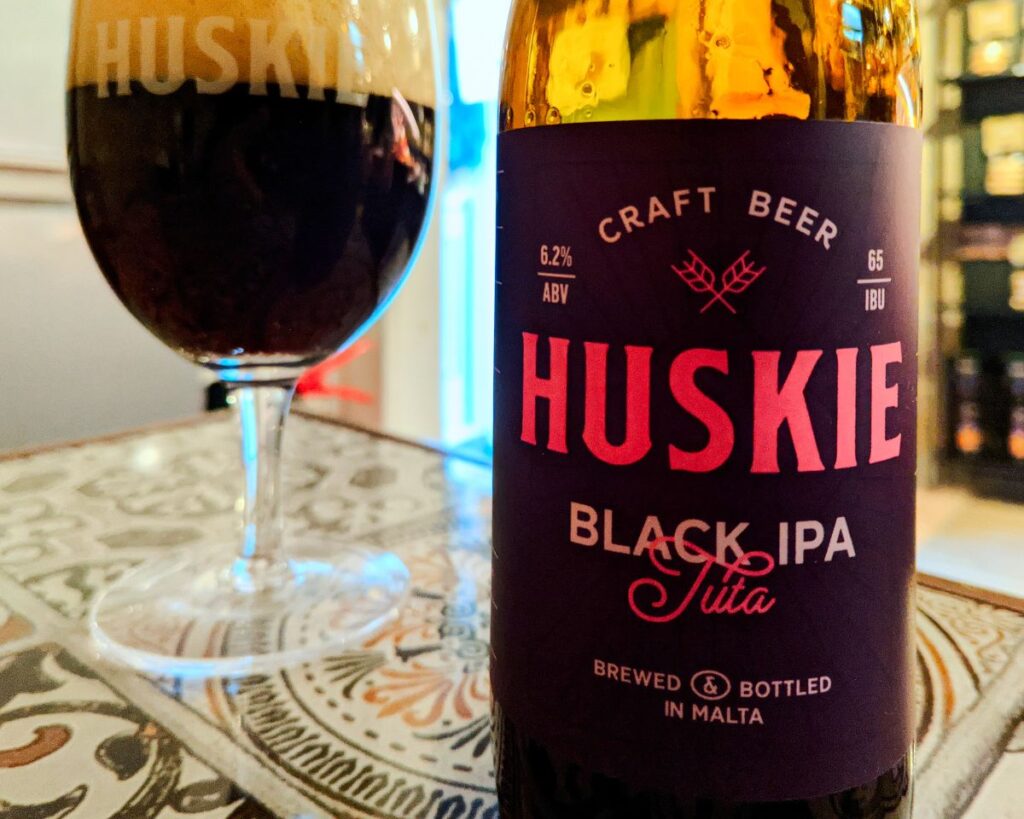
Hiking in Malta
A nice long walk or a hike is a perfect way to take your mind off your work as a Digital Nomad. Put on your boots or hiking shoes and make sure to visit these – off-the-beaten-path – places.
- Dingli Cliffs (great sunset) – Bring snacks & drinks or purchase coffee and local snacks from the food cart opposite the St Mary Magdalene Chapel. The Dingli Cliffs and Fawwara Trail is 9.3 km and takes you along the rugged coastline of this part of Malta. You don’t have to the full trail, just go as far as you like and return when done… Or complete the loop in about 3 hours. Or just go there to watch the light show that Mother Nature creates for us. Sunsets are amazing.
- Xemxija Hill Heritage Walk – Old Roman Road aka the Pilgrims Way takes you through a landscape scattered with Neolithic temples, ancient trees, caves and more. It is a fun hike packed with archaeological finds.
- Watchtower Trail – This trail connects several watchtowers, like the easy-to-spot Red Watch Tower aka Saint Agatha’s Tower.
Urbexing in Malta
Travellers that love to explore abandoned buildings will have a great time visiting the Festaval Hotel in Mellieha. This former hotel is almost completely hidden among the trees of Foresta 2000. When walking toward the Red Tower, you will see glimpses of it. It is easy to reach and easy to access (at your own risk, of course).
This blog has written an extensive article about the history of the Festaval Hotel.
Doing touristy things in Malta
Of course, you do have to visit some of the more touristy sites as well. Just to learn more about Maltese history and see amazing historic sites.
- Mdina – a fortified city in the Northern Region of Malta. It was Malta’s capital in medieval times. It is a fun place to wander and explore the narrow streets.
- Rabat – across the street from Mdina. Here you will find the famous Catacombs of St. Paul and of St. Agatha
- Cittadella of Victoria on Gozo where people have lived since the Bronze Age. In medieval times it was converted into a castle. Things to visit here:
- Gozo Museum of Archaeology
- Gran Castello Historic House (Folklore Museum)
- Natural Science Museum
- Old Prison
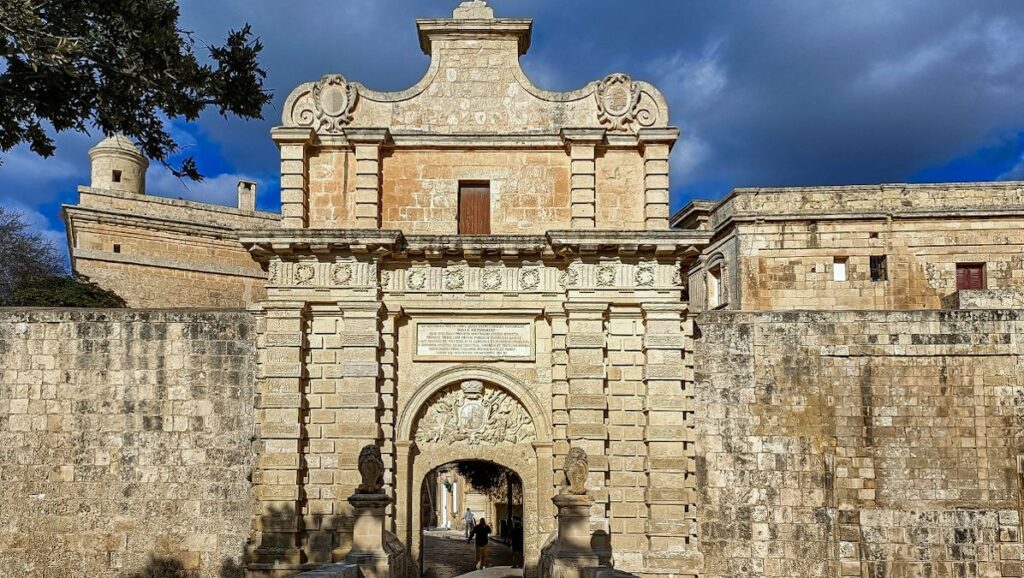
Conclusion my life as Digital Nomad in Malta
Malta is the perfect place for digital nomads to get lots of work done while still having plenty of things to do and see in between. You will enjoy a Mediterranean lifestyle in a place where English is one of the official languages. There are co-working spaces if you prefer to keep business life and your personal life separate. I loved it. My stint of 2.5 months in Malta was just the beginning, I will be back.

